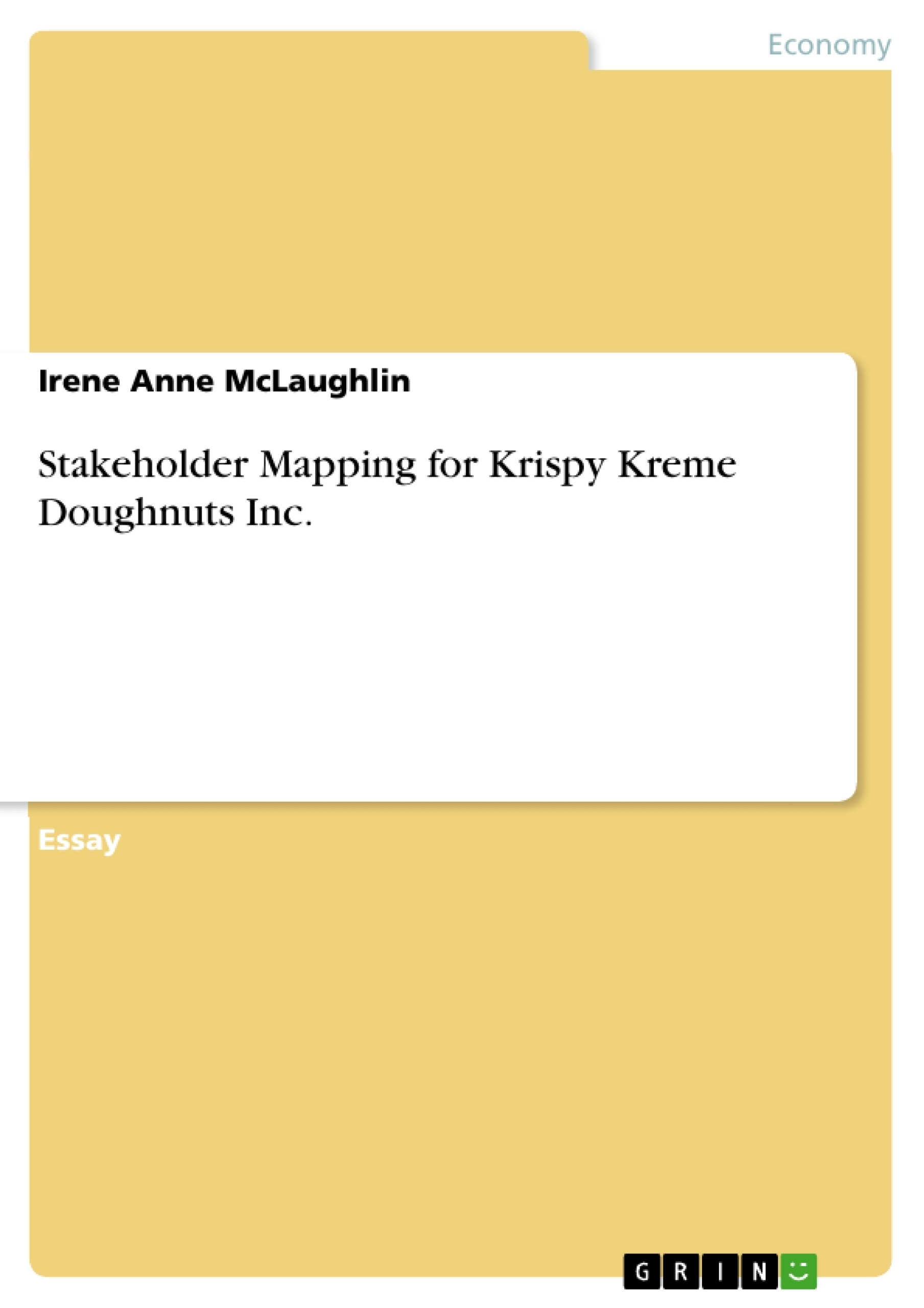The UK “Fast Food” or Quick Service Restaurant (QSR) industry was worth £33.5bn in 2014. Krispy Kreme (KK) is a leading branded retailer and wholesaler of doughnuts and baked goods and has recently been voted one of the most reputable QSR restaurants, despite a poor corporate governance history. KK's business includes the ownership and franchise of KK stores espousing good relationships with employees and the community via a variety of projects. This report analyses KK stakeholder relationships and compares the rhetoric to reality.
KK's history consists of company stores, domestic and international franchises plus the supply of doughnut ingredients and machinery.
Independent franchisees contributed 34% of total revenues for 2015. Failure of franchisees to successfully operate could materially affect reputation and profits, as the public view actions taken by franchisees as those undertaken by KK.
Inhaltsverzeichnis (Table of Contents)
- Introduction
- Main Body
- Organisation Profile
- Stakeholder Theory
- Stakeholder Mapping & Analysis
- Mendelow's Matrix
- The Power / Dynamism Matrix
- The Power, Legitimacy and Urgency Model
- Conflicts Between Stakeholders
- Management of Stakeholders
- Limitations of Stakeholder Analysis
- Advantage/Disadvantages of Stakeholder Analysis
- Recommendations
- Conclusions
Zielsetzung und Themenschwerpunkte (Objectives and Key Themes)
This report examines the stakeholder relationships of Krispy Kreme Doughnuts Inc. (KK) and compares the company’s rhetoric regarding its stakeholders to the reality of its actions. It seeks to understand the various stakeholders involved in KK’s operations, their varying needs and interests, and how these factors impact the company’s success.
- Stakeholder Theory and its application to KK
- Stakeholder Mapping and Analysis using different methodologies
- Conflicts of interest among stakeholders
- Management of stakeholders and the importance of communication
- Limitations and advantages of stakeholder analysis
Zusammenfassung der Kapitel (Chapter Summaries)
The report begins with an overview of the UK Quick Service Restaurant (QSR) industry and KK’s position within it, highlighting its recent corporate governance challenges. The organization profile then provides a detailed analysis of KK’s structure, financial performance, and market share. This is followed by an explanation of stakeholder theory and its relevance to understanding KK’s operations.
The section on stakeholder mapping and analysis explores different frameworks for understanding stakeholder dynamics, including Mendelow’s Matrix, the Power/Dynamism Matrix, and the Power, Legitimacy and Urgency Model. The report then discusses the potential conflicts between stakeholders and how these conflicts can impact decision-making within KK.
The report concludes by analyzing the advantages and disadvantages of stakeholder analysis, offering recommendations for how KK can strengthen its communication and engagement with its stakeholders to improve its overall reputation and ensure long-term success.
Schlüsselwörter (Keywords)
This report focuses on stakeholder mapping, stakeholder analysis, corporate governance, Quick Service Restaurant (QSR) industry, Krispy Kreme Doughnuts Inc. (KK), stakeholder relationships, stakeholder conflicts, communication strategies, and corporate social responsibility (CSR).
- Quote paper
- Irene Anne McLaughlin (Author), 2016, Stakeholder Mapping for Krispy Kreme Doughnuts Inc., Munich, GRIN Verlag, https://www.grin.com/document/336027




